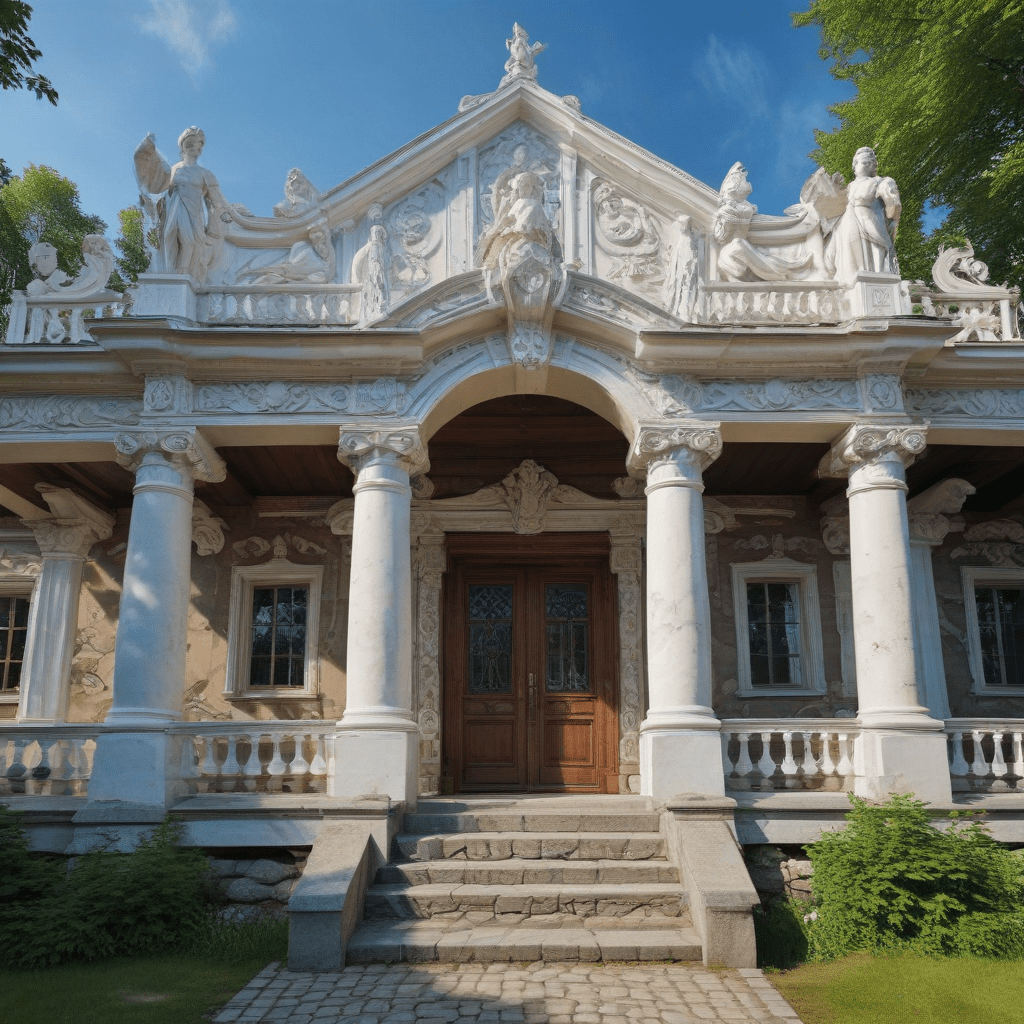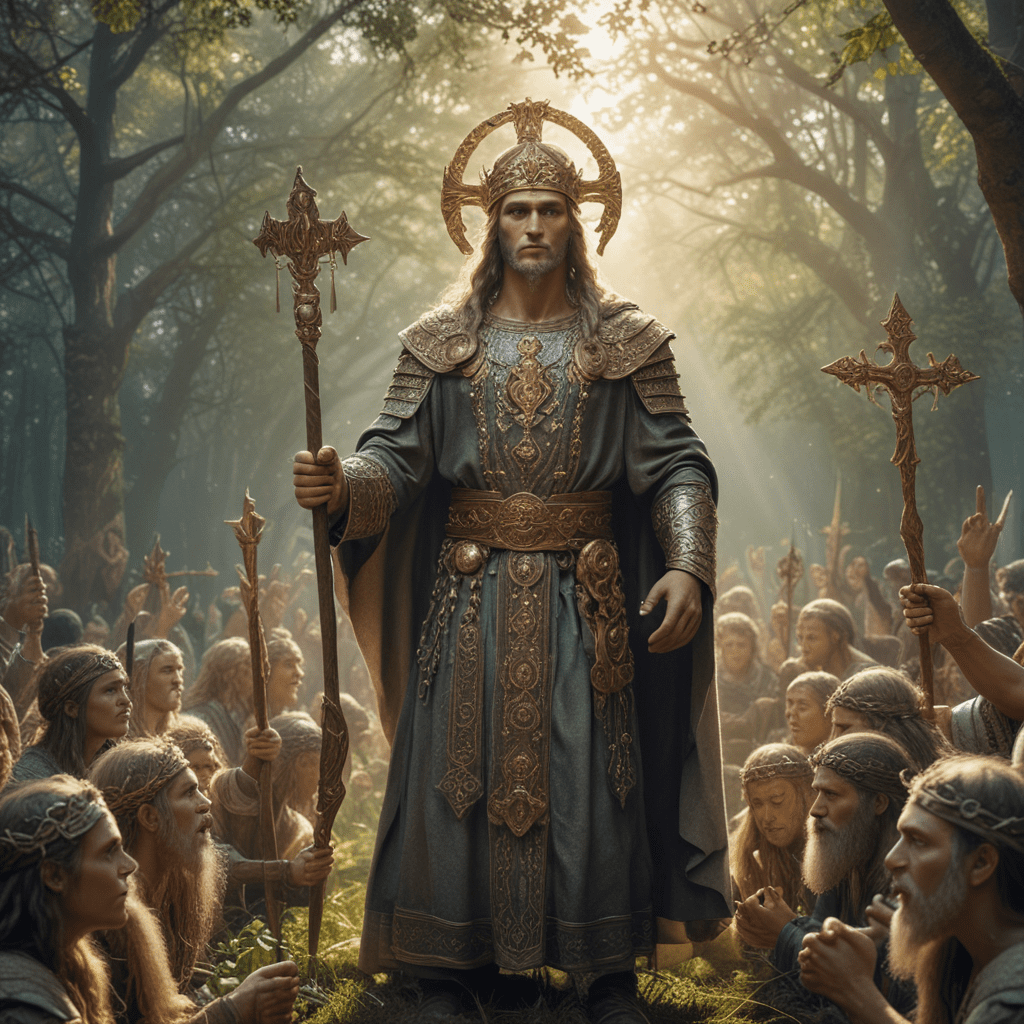1. Introduction
Finnish mythology, replete with captivating tales of nature spirits, mythical beings, and epic sagas, has profoundly influenced the architectural traditions of Finland. The enchanting tapestry of myths and legends has shaped the very essence of Finnish buildings, leaving an indelible mark on their form, symbolism, and construction methods.
2. Historical and Cultural Context
Ancient Finns held a deep reverence for nature and the forces that governed it. Their animistic beliefs imbued natural elements with spirits, connecting them to the realm of the divine. This sacred connection between humans and the natural world is reflected in the architectural legacy of Finland.
3. Mythical Deities and Their Architectural Manifestations
Finnish mythology abounds with deities wielding immense power over elemental forces. Ukko, the god of thunder and weather, is often depicted as a bearded old man carrying a mighty hammer. His symbolic representation has influenced the design of traditional chimneys, which often feature intricate carvings invoking his protection.
4. Symbols of Protection and Good Fortune
Mythical creatures and symbols played a significant role in warding off evil spirits and bringing good fortune to Finnish homes. The horseshoe, a ubiquitous symbol of luck, is frequently incorporated into architectural designs. Similarly, the mythical creature "hiisi," possessing both benevolent and malevolent aspects, is believed to protect houses from harm when its image is displayed.
5. Nature and the Natural World in Architecture
The Finnish reverence for nature is evident in the harmonious integration of natural elements into their architecture. Wood, a natural and sustainable material, is the predominant choice for building homes and other structures. This choice not only reflects the abundance of forests in Finland but also aligns with the country's deep-rooted connection to nature.
6. Influence of Shamanistic Beliefs
Shamanistic traditions played a significant role in Finnish culture, and their rituals and beliefs often found expression in architecture. The kelo, a dead standing pine tree, is held sacred in Finnish mythology and is believed to possess healing properties. Kelo trees are often incorporated into the construction of sauna buildings, as they are thought to purify and revitalize the body and spirit.
7. Use of Wood and Other Natural Materials
Wood has been the primary building material in Finland for centuries, due to its abundance and durability. Finnish architects have developed intricate techniques for working with wood, creating structures that are both sturdy and aesthetically pleasing. In addition to wood, other natural materials such as stone and moss are also commonly used in Finnish architecture, reflecting the country's deep connection to nature.
8. Regional Variations and Cultural Heritage
Finland's diverse regions exhibit unique architectural traditions, influenced by local history, climate, and cultural practices. For example, the wooden churches of Eastern Finland are known for their elaborate carvings and onion-shaped domes, while the stone buildings of Western Finland reflect the region's maritime history. These regional variations showcase the rich tapestry of Finnish cultural heritage.
9. Preservation and Conservation of Traditional Architecture
Recognizing the cultural and historical significance of traditional Finnish architecture, significant efforts are being made to preserve and conserve these structures. Many historical buildings have been restored and repurposed, serving as museums, cultural centers, and even private residences. Additionally, modern architects are incorporating traditional elements into contemporary designs, ensuring that the legacy of Finnish architecture continues to thrive.
10. Conclusion
Finnish mythology has left an enduring mark on the architectural traditions of the country. From the symbolic representations of deities to the use of natural materials, Finnish buildings embody the country's deep reverence for nature, its animistic beliefs, and its rich cultural heritage. The preservation and conservation of these architectural treasures ensure that future generations can continue to appreciate and learn from the timeless wisdom of Finnish mythology.
FAQ
Q: What is the significance of wood in Finnish architecture?
A: Wood is the primary building material in Finland, reflecting the country's abundance of forests and deep connection to nature. Finnish architects have developed intricate techniques for working with wood, creating structures that are both sturdy and aesthetically pleasing.
Q: How is Finnish mythology reflected in architectural symbols?
A: Finnish mythology abounds with deities wielding immense power over elemental forces. These deities are often depicted in architectural symbols, such as Ukko, the god of thunder, whose image is often carved into chimneys for protection.
Q: What is the role of nature in Finnish architecture?
A: Nature is deeply revered in Finnish mythology, and this reverence is reflected in the harmonious integration of natural elements into architecture. Wood, stone, and moss are commonly used materials, and buildings are often designed to blend seamlessly with the surrounding landscape.



